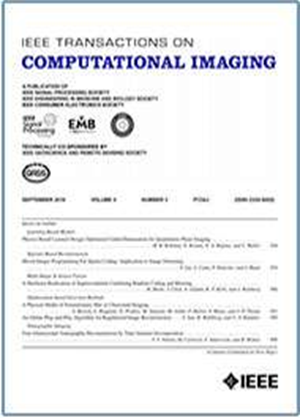Adaptive Luminance Enhancement and High-Fidelity Color Correction for Low-Light Image Enhancement
IF 4.8
2区 计算机科学
Q2 ENGINEERING, ELECTRICAL & ELECTRONIC
引用次数: 0
Abstract
It is a challenging task to obtain high-quality images in low-light scenarios. While existing low-light image enhancement methods learn the mapping from low-light to clear images, such a straightforward approach lacks the targeted design for real-world scenarios, hampering their practical utility. As a result, issues such as overexposure and color distortion are likely to arise when processing images in uneven luminance or extreme darkness. To address these issues, we propose an adaptive luminance enhancement and high-fidelity color correction network (LCNet), which adopts a strategy of enhancing luminance first and then correcting color. Specifically, in the adaptive luminance enhancement stage, we design a multi-stage dual attention residual module (MDARM), which incorporates parallel spatial and channel attention mechanisms within residual blocks. This module extracts luminance prior from the low-light image to adaptively enhance luminance, while suppressing overexposure in areas with sufficient luminance. In the high-fidelity color correction stage, we design a progressive multi-scale feature fusion module (PMFFM) that combines progressively stage-wise multi-scale feature fusion with long/short skip connections, enabling thorough interaction between features at different scales across stages. This module extracts and fuses color features with varying receptive fields to ensure accurate and consistent color correction. Furthermore, we introduce a multi-color-space loss to effectively constrain the color correction. These two stages together produce high-quality images with appropriate luminance and high-fidelity color. Extensive experiments on both low-level and high-level tasks demonstrate that our LCNet outperforms state-of-the-art methods and achieves superior performance for low-light image enhancement in real-world scenarios.低光图像增强的自适应亮度增强和高保真色彩校正
在低光环境下获取高质量图像是一项具有挑战性的任务。虽然现有的低光图像增强方法学习了从低光到清晰图像的映射,但这种简单的方法缺乏针对现实场景的针对性设计,阻碍了其实际应用。因此,当处理亮度不均匀或极度黑暗的图像时,可能会出现过度曝光和色彩失真等问题。为了解决这些问题,我们提出了一种自适应亮度增强和高保真色彩校正网络(LCNet),该网络采用先增强亮度后校正颜色的策略。具体而言,在自适应亮度增强阶段,我们设计了一个多阶段双注意残差模块(MDARM),该模块在残差块中融合了平行的空间和通道注意机制。该模块从低光图像中预先提取亮度,自适应增强亮度,同时在亮度充足的区域抑制过度曝光。在高保真色彩校正阶段,我们设计了渐进式多尺度特征融合模块(PMFFM),该模块将渐进式多尺度特征融合与长/短跳跃连接相结合,实现了不同阶段不同尺度特征之间的彻底交互。该模块提取和融合具有不同接受域的颜色特征,以确保准确和一致的颜色校正。此外,我们引入了多色彩空间损失来有效地约束色彩校正。这两个阶段共同产生具有适当亮度和高保真色彩的高质量图像。在低级和高级任务上的大量实验表明,我们的LCNet优于最先进的方法,并在现实场景中实现了卓越的低光图像增强性能。
本文章由计算机程序翻译,如有差异,请以英文原文为准。
求助全文
约1分钟内获得全文
求助全文
来源期刊

IEEE Transactions on Computational Imaging
Mathematics-Computational Mathematics
CiteScore
8.20
自引率
7.40%
发文量
59
期刊介绍:
The IEEE Transactions on Computational Imaging will publish articles where computation plays an integral role in the image formation process. Papers will cover all areas of computational imaging ranging from fundamental theoretical methods to the latest innovative computational imaging system designs. Topics of interest will include advanced algorithms and mathematical techniques, model-based data inversion, methods for image and signal recovery from sparse and incomplete data, techniques for non-traditional sensing of image data, methods for dynamic information acquisition and extraction from imaging sensors, software and hardware for efficient computation in imaging systems, and highly novel imaging system design.
 求助内容:
求助内容: 应助结果提醒方式:
应助结果提醒方式:


